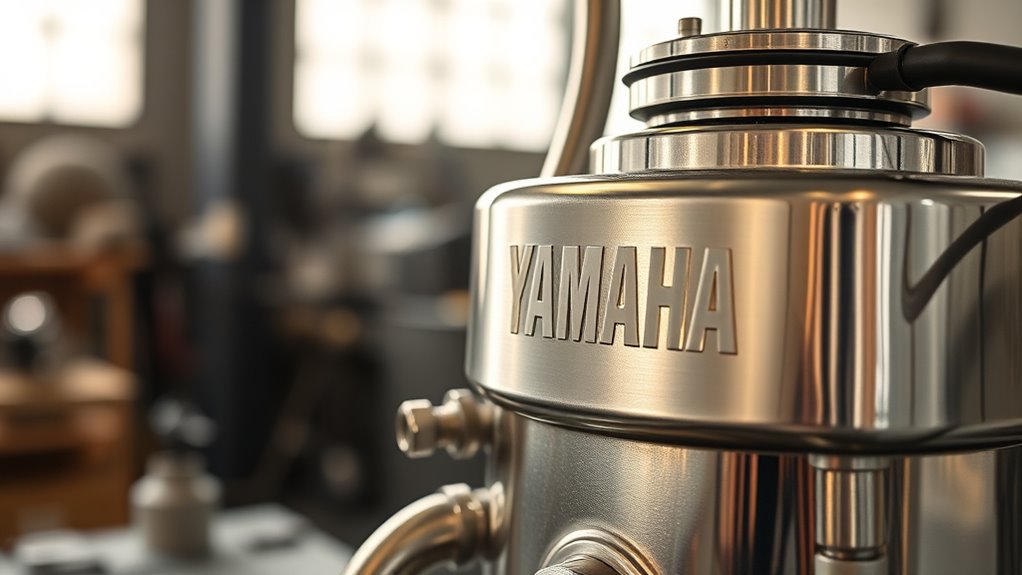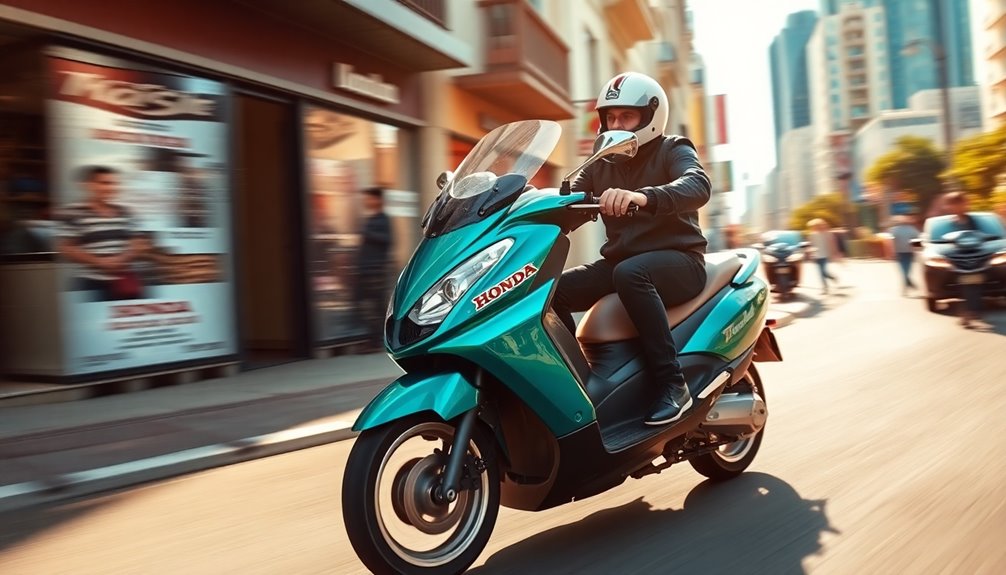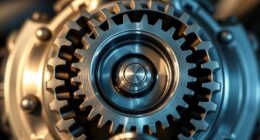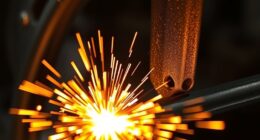Yamaha fuel pumps are generally known for their reliability and durability when properly maintained. You can expect them to perform well with regular inspections, such as checking fuel filters and electrical connections. Common issues arise from debris, electrical problems, or age-related wear, but these are preventable with good upkeep. If you’re interested in maximizing your pump’s lifespan and avoiding surprise failures, there’s more useful info to help you keep everything running smoothly.
Key Takeaways
- Yamaha fuel pumps are known for their durability and dependability when properly maintained.
- Regular inspection and cleaning of filters prevent debris buildup and potential failures.
- Electrical issues like corroded wiring or loose connections can cause pump malfunctions.
- Proper fuel quality and avoiding contamination extend the pump’s lifespan.
- Prompt attention to warning signs ensures reliable engine performance and reduces risk of failure.
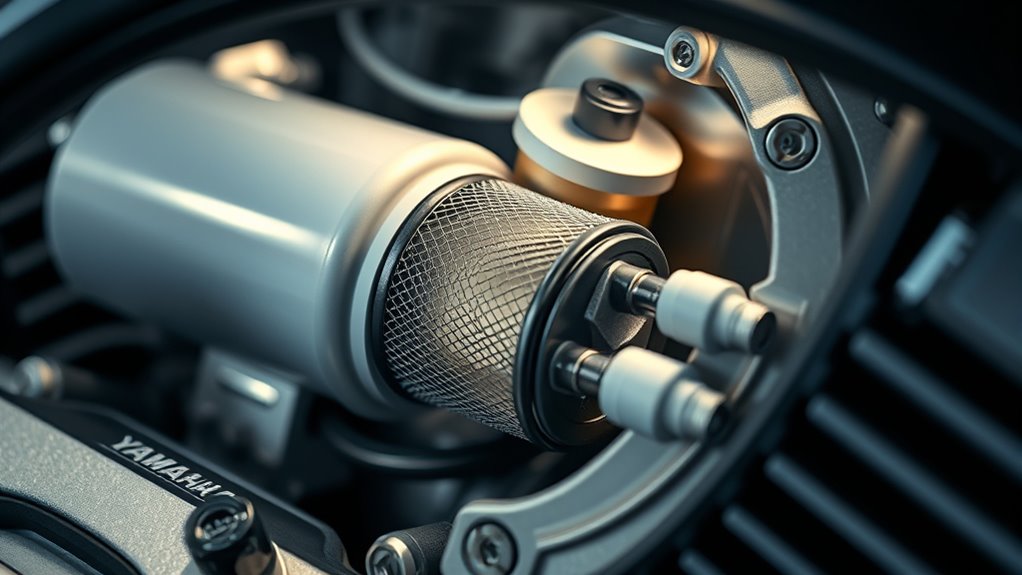
Are Yamaha fuel pumps as reliable as they’re reputed to be? Many boat owners and mechanics would say yes, but like any mechanical component, they aren’t immune to issues. Understanding how to keep your Yamaha fuel pump in prime shape starts with proper fuel pump maintenance. Regularly inspecting and cleaning the fuel filter, checking for leaks, and ensuring the pump’s electrical connections are secure can go a long way toward preventing problems. When you stay on top of these small tasks, you reduce the risk of more considerable failures down the line. It’s also essential to keep an eye on the fuel quality, as contaminated or old fuel can accelerate wear or clog the pump’s internal components, leading to decreased performance or failure. Additionally, being aware of the fuel pump’s lifespan** and recognizing early warning signs can help you plan timely replacements. Common failure causes for Yamaha fuel pumps typically stem from neglect or external factors. One of the most frequent issues is debris or dirt entering the fuel system, which can clog the pump or damage its internal parts. This is why fuel filter maintenance is critical—replacing or cleaning filters regularly can prevent debris from reaching the pump. Another common cause involves electrical problems. Fuel pumps rely on a steady power supply, and corroded wiring, loose connections, or a failing relay can cause intermittent operation or complete failure. Over time, heat and vibration can also weaken electrical contacts, leading to inconsistent fuel delivery. Additionally, exposure to moisture or water contamination can corrode internal components, impairing the pump’s function or causing it to fail prematurely. Age is another factor worth considering. Like any mechanical device, fuel pumps wear out over time, especially if they’ve been subjected to harsh conditions or poor maintenance. When this happens, symptoms such as difficulty starting, engine stalling, or a noticeable drop in performance can indicate that it’s time to replace or repair the pump. Sometimes, fuel pumps may also fail due to manufacturing defects, but these are less common and often covered under warranty. Ultimately, Yamaha fuel pumps are built to be durable and reliable, but their longevity depends heavily on proper care. Consistent fuel pump maintenance**, avoiding contaminated fuel, and promptly addressing any electrical issues can considerably extend their lifespan. By understanding the common failure causes, you can better troubleshoot problems and prevent costly repairs. When you keep your Yamaha fuel pump in good condition, you’re not just ensuring prime engine performance—you’re also making your boating experience safer and more enjoyable.
Frequently Asked Questions
How Often Should I Replace the Yamaha Fuel Pump?
You should replace your Yamaha fuel pump approximately every 100,000 miles or every 5 to 7 years, whichever comes first. The fuel pump lifespan varies based on usage and maintenance, so keep an eye out for signs like difficulty starting or stalling. Regular inspections and following recommended replacement intervals help prevent unexpected failures, ensuring your Yamaha runs smoothly. Always consult your owner’s manual for specific guidance on your model.
Are Yamaha Fuel Pumps Covered Under Warranty?
You’ll be surprised—Yamaha fuel pumps are covered under warranty, so you won’t need to worry when trouble strikes. Just remember, warranty coverage usually includes a fuel pump inspection, ensuring any issues get sorted without draining your wallet. It’s like having a safety net; so, if your pump acts up, Yamaha’s warranty keeps you covered, giving you peace of mind and a smooth ride ahead.
Can I Upgrade My Yamaha Fuel Pump for Better Performance?
Yes, you can upgrade your Yamaha fuel pump for better performance. Many enthusiasts explore aftermarket options and performance upgrades to improve fuel delivery and engine efficiency. Before making any modifications, guarantee compatibility with your model and consider professional installation to avoid issues. Upgrading your fuel pump can boost power and reliability, but always research carefully and choose reputable brands for the best results.
What Are Common Signs of a Failing Yamaha Fuel Pump?
Imagine your Yamaha engine sputtering like a dying engine, struggling to stay alive. You might notice fuel pump diagnostics revealing inconsistent delivery, engine stalling unexpectedly, or difficulty starting. These are signs of a failing fuel pump. When you see these symptoms, it’s time for replacement procedures. Don’t delay—addressing these issues early keeps your Yamaha running smoothly and prevents costly repairs down the line.
Does Fuel Quality Affect Yamaha Fuel Pump Longevity?
Yes, fuel quality definitely affects your Yamaha fuel pump’s longevity. When you use contaminated fuel, it can cause clogging and reduce pump efficiency. Additionally, poor-quality fuel leads to pump corrosion over time, weakening its components. To keep your Yamaha running smoothly, always use fresh, clean fuel and consider adding fuel stabilizers if storing your boat for a while. This helps prevent damage caused by fuel contamination and corrosion.
Conclusion
If you want your Yamaha to keep roaring like a lion for years, trusting its fuel pump is key. While most units excel in reliability, a rare hiccup can happen, but it’s as unusual as rain in the desert. Regular maintenance and prompt attention to issues will keep your Yamaha running smoother than silk. Stick with trusted parts, and you’ll enjoy endless adventures without worry—your Yamaha’s fuel pump is a true champion in the world of engines.
